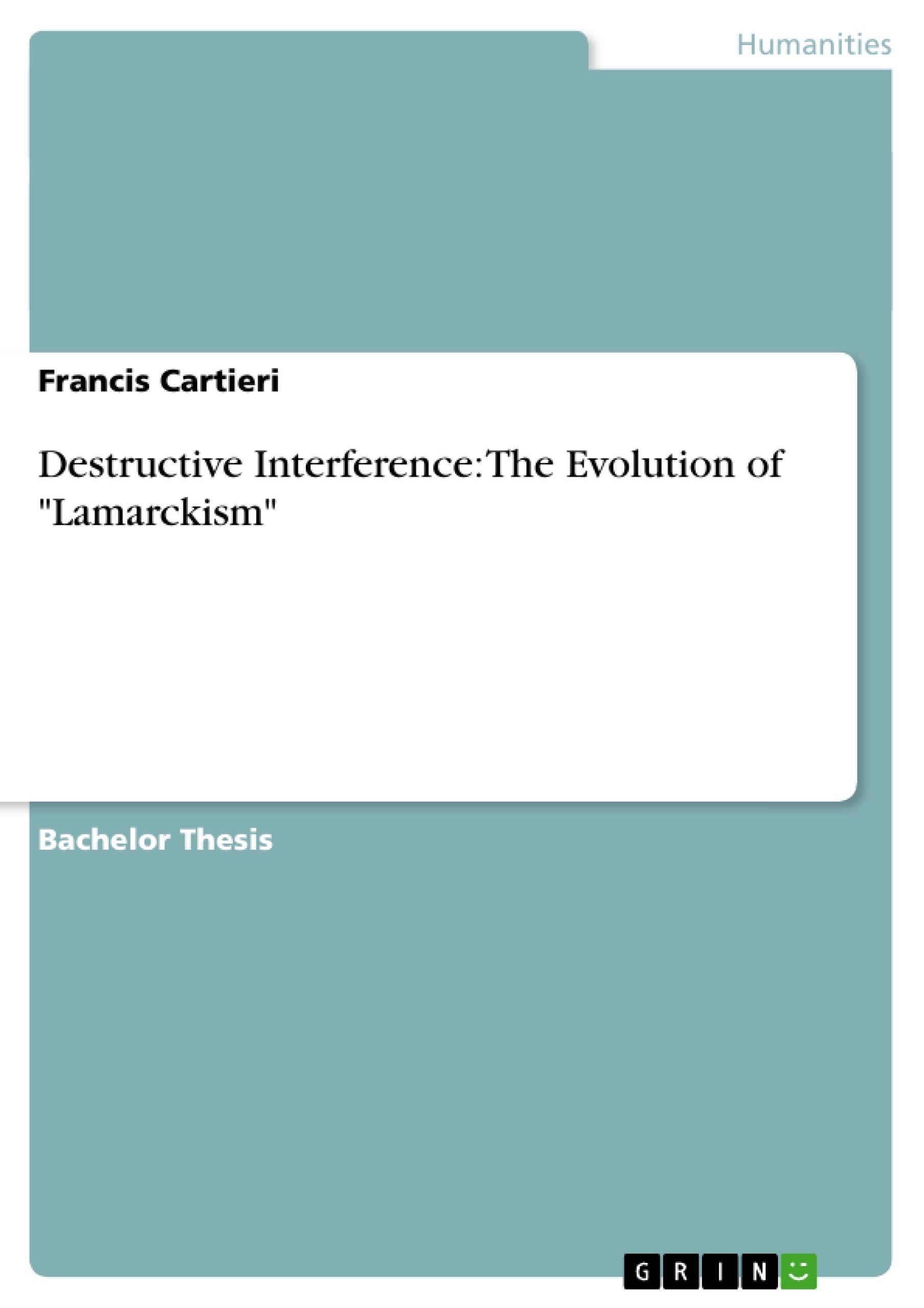Most biologists resist positive claims about Lamarckian modes of inheritance, as they perceive such claims as threatening the hegemony of the Darwinian paradigm in which they operate. However, this hesitance may be misguided and unconstructive, should it arise from misconceptions about the relationship between contemporary ‘Lamarckian’ discoveries and the views which Lamarck himself actually held. Given the recent revitalization of interest in Lamarckian evolutionary perspectives (Cairns et al. 1988, Hall 1991, Ewer 1996, 2004; Steele 1979, 1998; Jablonka and Lamb 2007), and the lingering ambiguity concerning what constitutes Lamarckian theses, it would be prudent to evaluate the relationship between contemporary Lamarckian theses and traditional Lamarckian positions.
Scientists working in evolutionary fields tend to label as ‘Lamarckian’ any claims that imply the inheritance of somatic mutations; adaptations derived through interaction between the organism and environment, and subsequently passed to offspring (the most famous example being the giraffe stretching its legs and neck to reach higher leaves). However, the relationship connecting contemporary ‘Neo-Lamarckian’ ideas and traditional Lamarckian ideas is dubious at best, and conceptually misleading at worst, both for working scientists and casual laymen. For example, traditional Lamarckian inheritance acts through the whole organism or its parts, while modern Lamarckian inheritance tends to act on individual cells or even whole populations. The invocation of the label “Lamarckian” carries historical and conceptual baggage that I would like to disambiguate from recent, supposedly ‘Lamarckian’ modes of inheritance. To accomplish this, I will reveal and clarify the evolutionary claims that Lamarck himself published, most notably in Jean-Batiste Lamarck’s Philosophie Zoologique, and evaluate the relationship between his traditional claims, and more recent claims labeled as “Lamarckian” by contemporary scientists. This paper will provide an analysis of the conceptual interplay occurring between modern Lamarckian claims, and what Lamarck actually believed and published, via an investigation of the evolution of the term Lamarckian/Lamarckism from 1809 to the present; my conclusion, then, should be a fair appraisal of the relationship existing between Lamarck’s actual claims and contemporary Neo-Lamarckian claims.
- Citar trabajo
- Francis Cartieri (Autor), 2008, Destructive Interference: The Evolution of "Lamarckism", Múnich, GRIN Verlag, https://www.grin.com/document/118856
-

-

-

-
¡Carge sus propios textos! Gane dinero y un iPhone X. -

-
¡Carge sus propios textos! Gane dinero y un iPhone X. -

-
¡Carge sus propios textos! Gane dinero y un iPhone X. -

-
¡Carge sus propios textos! Gane dinero y un iPhone X. -

-
¡Carge sus propios textos! Gane dinero y un iPhone X. -

-
¡Carge sus propios textos! Gane dinero y un iPhone X. -

-
¡Carge sus propios textos! Gane dinero y un iPhone X.

